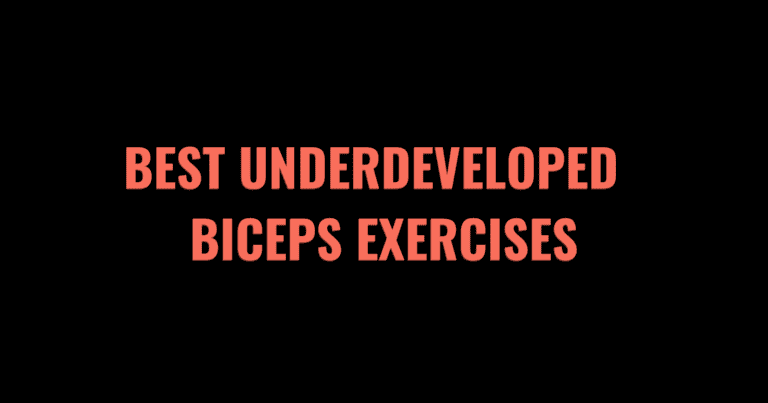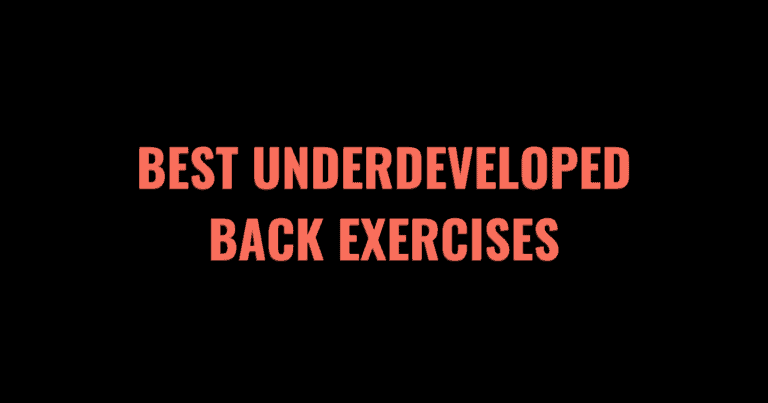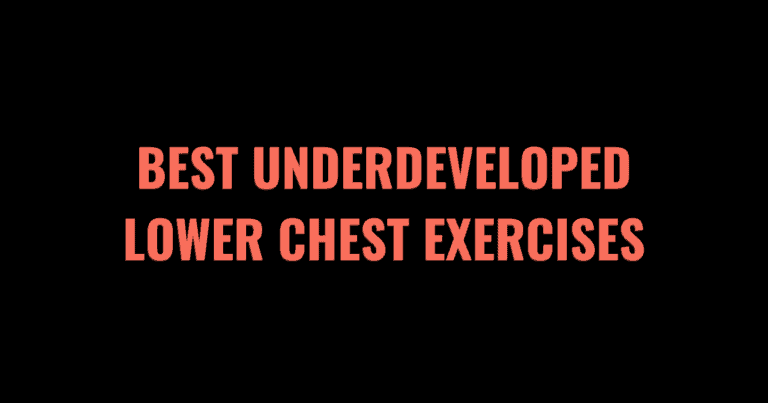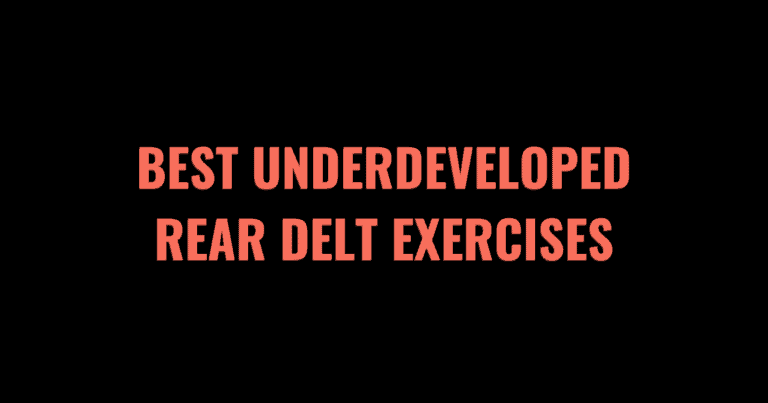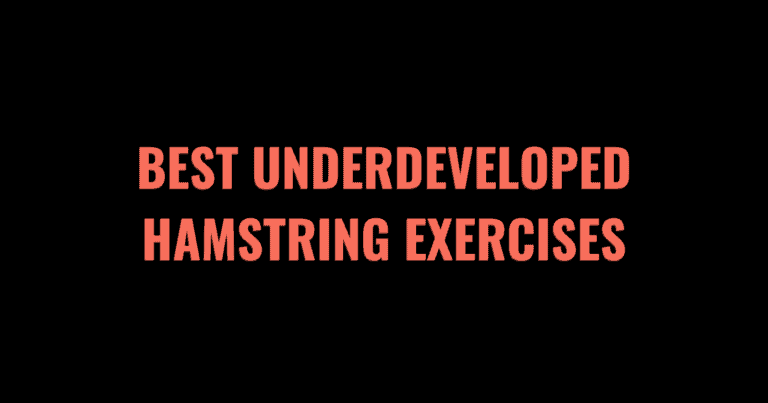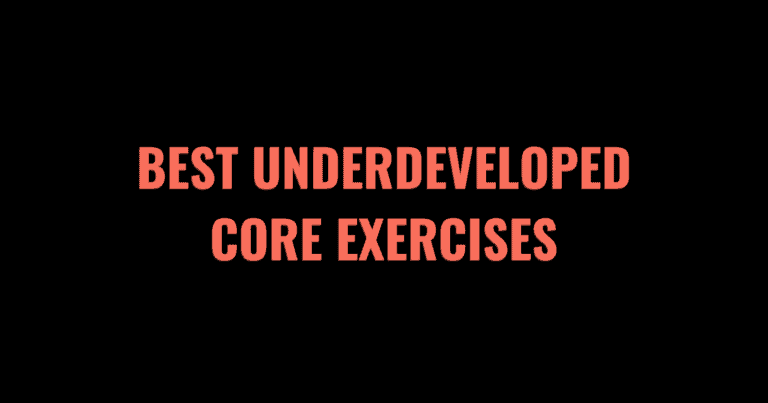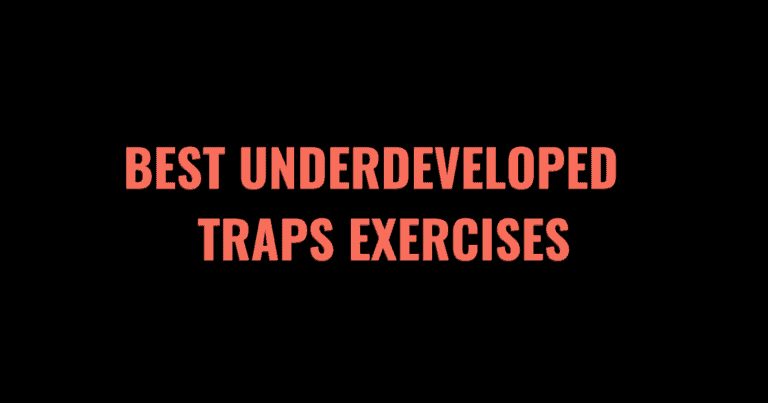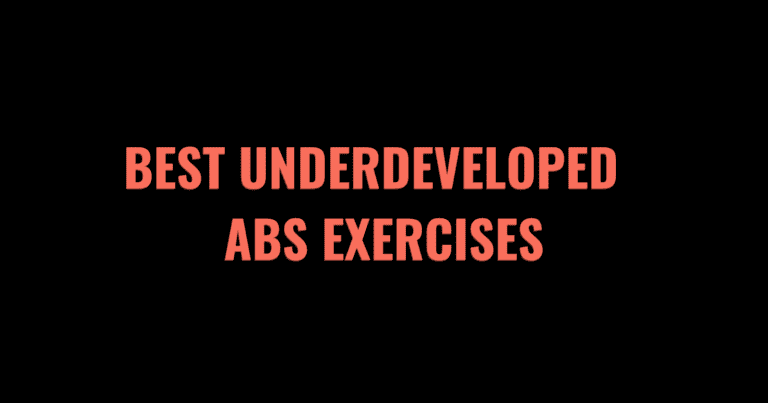Do you want stronger, more muscular upper arms and shoulders? Have you been consistent with your shoulder workouts but still lack definition and muscle mass? If you want to build thick, rounded boulder shoulders – you’re in luck.
Read on to learn why your deltoids aren’t growing. You’ll also find the best exercises and training strategies to help you grow weak or underdeveloped shoulder muscles.
Table of Contents
- 1 What are underdeveloped shoulders?
- 2 The 8 Best Ways to Grow Bigger Shoulders
- 2.1 1. Prioritize deltoid training earlier in your session
- 2.2 2. Lower the weight to perfect your form
- 2.3 3. Choose exercises you can safely progressively overload
- 2.4 4. Work your delts in multiple planes
- 2.5 5. Train each head of the deltoid like its own muscle
- 2.6 6. Use functional exercises
- 2.7 7. Eliminate assistance from other muscle groups
- 2.8 8. Consider a creatine supplement
- 3 Deltoid Anatomy
- 4 The 15 Best Exercises for Building Bigger Shoulders
- 5 What are underdeveloped shoulder muscles?
- 6 Underdeveloped Deltoids FAQs
- 7 Grow Underdeveloped Muscle Groups
- 7.1 The 8 Best Ways to Grow Bigger Biceps
- 7.2 The 8 Best Ways to Grow a Bigger Back
- 7.3 The 8 Best Ways to Grow a Bigger Lower Chest
- 7.4 The 7 Best Ways to Grow Underdeveloped Obliques
- 7.5 The 7 Best Ways to Grow Bigger Rear Delts
- 7.6 The 8 Best Ways to Grow Bigger Hamstrings
- 7.7 The 5 Best Ways to Grow Bigger Triceps
- 7.8 The 8 Best Ways to Build an Underdeveloped Core
- 7.9 The 8 Best Ways to Grow Bigger Upper Abs
- 7.10 The 8 Best Ways to Grow Bigger Traps
- 7.11 The 8 Best Ways To Grow a Bigger Upper Chest
- 7.12 The 8 Best Ways to Grow Bigger Front Delts
- 7.13 The 8 Best Ways to Strengthen Abs
What are underdeveloped shoulders?
Underdeveloped deltoids (shoulder muscles) occur when your shoulders are weaker or smaller than other muscles in your upper body. Your shoulders will also appear undeveloped and uneven if you don’t give enough attention to each of the three heads of the shoulder muscle.
To address lagging deltoids, prioritize effective shoulder exercises, focus on progressive overloading, and always use proper form. While many popular shoulder exercises emphasize the anterior (front) deltoid, don’t neglect the lateral and rear delts to build well-rounded, meaty shoulders.
The 8 Best Ways to Grow Bigger Shoulders
- Prioritize deltoid training earlier in your session
- Lower the weight to perfect your form
- Choose exercises you can safely progressively overload
- Work your delts in multiple planes
- Train each head of the deltoid like its own muscle
- Use functional exercises
- Eliminate assistance from other muscle groups
- Consider a creatine supplement
1. Prioritize deltoid training earlier in your session
If you’re currently performing delt exercises at the end of your upper body day, rethink your exercise order. You have more mental and physical energy at the start of your session. Moreover, your delts begin to fatigue after several sets of heavy chest and bicep work.
If you want to see noticeable size and strength gains in your shoulders, place delt exercises at the beginning of your workout and give them everything you’ve got. Make sure you track your lifts over time and keep pushing the muscle fibers to grow bigger and stronger.
2. Lower the weight to perfect your form
Lifting heavy weights is essential for building strength, but cutting your range of motion short or neglecting proper form will only delay reaching your goals. For example, if done correctly, the dumbbell lateral raise is one of the best exercises for building wider medial (side) delts.
But your shoulders won’t benefit from lifting too much weight and swinging your upper body to lift the dumbbells. If you’re struggling with underdeveloped shoulders, lower your weights and pay better attention to your form.
Keep your shoulder blades depressed and pulled back to prevent your upper traps from taking over. Focus on squeezing the delts to initiate every exercise to hone in on your target muscle group.
3. Choose exercises you can safely progressively overload
If you haven’t increased the weight, reps, or intensity of your delt training lately, your shoulders have likely stopped growing.
Progressive overload, where every session is a little more challenging than the last, is a crucial predictor of continued hypertrophy. You can progressively overload your deltoids by adding more weight, doing more reps, improving your form, or experimenting with tempo and pauses.
One umbrella study found that “even in trained subjects, who tend to present an attenuated response to training, significant improvements in hypertrophy have been observed without having applied any periodization model, simply with an adequate progressive overload.”
Pushing your working sets closer to failure gets less straightforward and more dangerous as your weights increase. Don’t be afraid to utilize machines to use more intensity safely or get a spotter or a coach to get closer to failure without risking injury.
4. Work your delts in multiple planes
Your body moves in several dimensions in the gym and through daily activities like walking, carrying objects, and cleaning. Your shoulder joint is complex and one of the few joints in the body that can move in all directional planes.
- The sagittal plane splits the body into left and right halves and involves forward and backward movements, such as the bench press, which works the anterior deltoid.
- The coronal or frontal plane cuts the body into front and back halves, involving side-to-side movements like lateral raises for the medial (side) deltoids.
- The transverse plane divides the body into top and bottom halves, using twisting movements like planks with kettlebell pull-throughs.
Many shoulder exercises involve multiple planes. Using multiplanar training reduces muscular imbalances, prevents injury, and increases your functional strength and fitness.
If you’ve been primarily training your shoulders in one plane of motion, Switch up your movements to yield better gains.
5. Train each head of the deltoid like its own muscle
Popular pressing exercises like overhead presses, bench presses, and front raises emphasize the anterior delt. Focusing all your shoulder training on the front deltoid will impede your overall muscle growth and may fatigue your upper body before heavy compound lifts.
Ensure you give the other two muscles in your shoulders enough attention. The rear delts are a relatively small muscle group that is often neglected but crucial for adding depth to the shoulders. Your rear delts stabilize the joint so that you can load all three heads of the delt with more weight.
Your program also needs enough volume to build your medial (side) delt, giving your shoulder muscles greater width and density. A well-balanced training plan offering sufficient volume to each of the three heads of the shoulder will work wonders in building stubborn, lagging deltoids.
6. Use functional exercises
Traditional bodybuilding exercises get stale and boring after a while. If you mentally check out from your training sessions, it’s no surprise your muscle growth has stalled.
Bust through plateaus, prevent boredom and complacency, and build well-rounded fitness skills with functional exercises like Turkish getups and handstand holds.
These exercises are known as closed-chain exercises. In contrast to pushing dumbbells or barbells, movements like handstand holds force your body to stabilize against the fixed upper arm position. These movement patterns challenge the deltoid muscle in new ways, improve mobility, and build strength and stability to enhance your targeted hypertrophy movements.
7. Eliminate assistance from other muscle groups
Don’t underestimate the degree to which other muscle groups take over when your shoulders fatigue. Towards the end of a difficult set, your legs, core, and lower back may start to engage to complete the final reps.
Unfortunately, the last few hard reps have the most potential for tearing the muscle and triggering new growth. Vary your delt training by sitting or kneeling instead of standing to eliminate assistance from neighboring muscle groups and isolate your shoulders more effectively.
8. Consider a creatine supplement
If you’ve exhausted all the training tweaks and strategies to break through a shoulder growth plateau, consider taking a creatine supplement to boost your workouts. Creatine is a highly researched, inexpensive supplement that can give you more energy in your workouts, increase muscle growth, and force water into the muscle cells to give your shoulders a better pump.
Deltoid Anatomy
Neglecting the side or rear delts is a common reason for imbalanced or underdeveloped shoulders. Understanding the location and function of each part of your shoulder muscles will help you identify and address your weak points and promote balanced shoulder development.
When most people talk about shoulder training, they are referring to the deltoids, which have three different heads – the anterior (front), medial (side), and rear delts. These three heads are the prime movers of the shoulder joint and upper arm in various directions.
Your rotator cuff is another crucial part of your shoulder and comprises the infraspinatus, supraspinatus, teres minor, and subscapularis. These muscles stabilize the shoulder joint and control internal and external rotation.
A range of shoulder exercises that strengthen all these muscles is the best way to develop a well-rounded training plan and build resilient, strong, balanced, and meaty shoulders.
The 15 Best Exercises for Building Bigger Shoulders
Anterior Deltoid Exercises
- Dumbbell Front Raises
- Military Press (Overhead Press)
- Dumbbell Shoulder Presses
- Arnold Presses
- Push Presses
Medial Deltoid Exercises
- Dumbbell Side Lateral Raises
- Cable Machine Lateral Raise
- Wide Grip Barbell Upright Rows
- Dumbbell Armpit Rows
- Iron Cross Dumbbell Walks
Posterior Deltoids Exercises
- Machine Reverse Fly (Reverse Pec Deck)
- Bent-Over Rear Delt Fly
- Cable Face Pulls
- Seated Rear Delt Cable Flys
- Cable Single Arm Rear Delt Flys
What are underdeveloped shoulder muscles?
Underdeveloped or lagging shoulders result from poor training technique, lack of progressive overload, and imbalanced amounts of rear, medial, and front delt training. Inadequate carbohydrate and protein intake can also cause weak shoulders.
You can address weak or lagging shoulder muscles by using proper form, increasing your intensity each session, hitting all three heads of the deltoid with enough volume, and considering nutritional strategies like increasing your protein intake and using a creatine supplement.
Underdeveloped Deltoids FAQs
How often should you train your shoulders?
To build undeveloped or scrawny shoulders, target each of the three deltoid heads. The Renaissance Periodization Hypertrophy Training Guide suggests the following frequency for the deltoids:
- Front delts: No direct front delt is required if you do sufficient chest pressing. To build lagging front delts, train them directly twice a week for a total 12 weekly sets.
- Side delts: Depending on your experience level, do between eight and 40 sets of side delt training per week, split into two to six sessions.
- Rear delts: Intermediate to advanced lifters will need between six and 35 sets of rear delt work per week, split into two to six sessions.
What intensity is optimal for building stubborn shoulders?
All three deltoid heads benefit from a range of intensities, usually between 30 and 85% of your 1RM. Split up your delt training into heavy (5-10 reps), moderate (10-20 reps), and light (20-30 reps) to target the muscle fibers in different ways.
Moderate intensity (10-20 reps on your first set if taken to failure) may have the best tradeoff between stimulus and fatigue, so aim to do 50% of your weekly volume in this range. The other half of your training can be split between heavier loads, fewer reps, and higher-rep, lower-intensity training.
What rep range is ideal for building bigger shoulders?
Each of the three deltoids heads benefits from a variety of rep ranges. Your front delts benefit most from 5-20 rep range sets. You should avoid doing too much direct front delt work in the 20+ rep range, as the tradeoff between fatigue and hypertrophy is poor.
In contrast, your side delts may grow more effectively with higher ranges of between 10 and 30 reps. Training your side delts in the heavy 5-10 rep range may help break through plateaus but is only optimal for some lifters.
Your rear delts similarly respond best to sets between 10 and 30 reps, with little additional benefit seen from pushing heavy weights for 5-10 reps. Each lifter’s biomechanics are different, but these estimates are a helpful guide to structure your shoulder training plan most effectively.
Grow Underdeveloped Muscle Groups
If you enjoyed this post, check out our other guides on how to grow lagging muscle groups.
